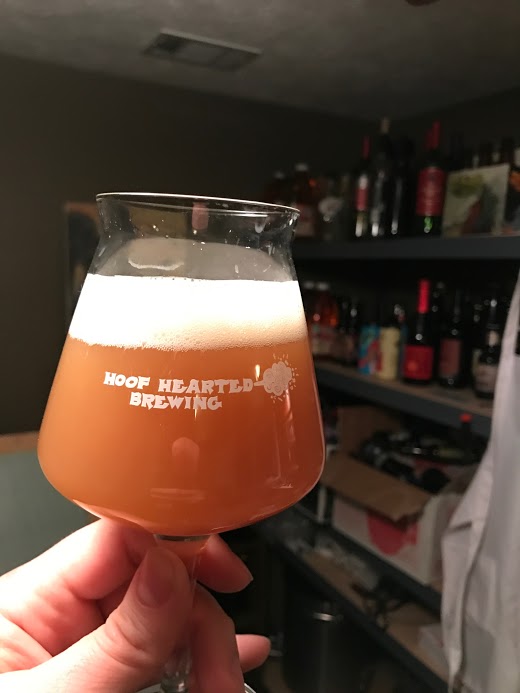Hey All,
Just cracked the bottle on my first attempt of a NEIPA.
Here is my recipe. Its a little strange, and I think I may change it up a bit.
Batch Size: 3gal
OG: 1.058
FG: 1.008
Yeast: OMEGA - Tropical IPA (No Starter)
Mash temp: 154F
Mash and Boil Time: 60min
Primary: 18 Days @ 77F
Secondary: 8 Days @ 58F
Dry Hop#1: 8th Day of Ferm
Dry Hop #2: Start of Secondary
Dry Hop #3: 5th Day Of Secondary
Primed with corn sugar
In the bottle for 18 days before opening.
Grains:
Golden Promise 4lb
Flaked Oats 1lb
Flaked Barley 1lb
Flaked Wheat 1lb
Caramel/Crystal Malt - 40L 0.15lb
Carapils 0.065lb (Ran Out)
Hops:
7g Galaxy (30min)
7g Citra (30min)
7g Mosaic (30min)
14g Galaxy (DH1 and 2)
14g Citra (DH1 and 2)
14g Mosaic (DH1 and 2)
21g Galaxy (DH3)
21g Citra (DH3)
21g Mosaic (DH3)
NO WATER ADJUSTMENTS
Turned out great for my first one. It is a bit dry though, due to the low FG. Hops are amazing. Grapefruit, Melon, a little bit of flowers. Its great.
Haze looks awesome. They key is the dry hops, and I think the drop to 58F in secondary helped with this also.
Here is what I would change
1. Maybe a small bittering charge at 60. Probably Centennial next time.
2. Mash hotter. Probably shoot for 156F next time
3. This yeast was awesome. Ate all my sugars. I would pull this off primary when I hit about 1.018.
Critique me! Let me know if I can change anything. Or ask questions!
Thanks for all of your wisdom also. Couldnt have done it without yous!





